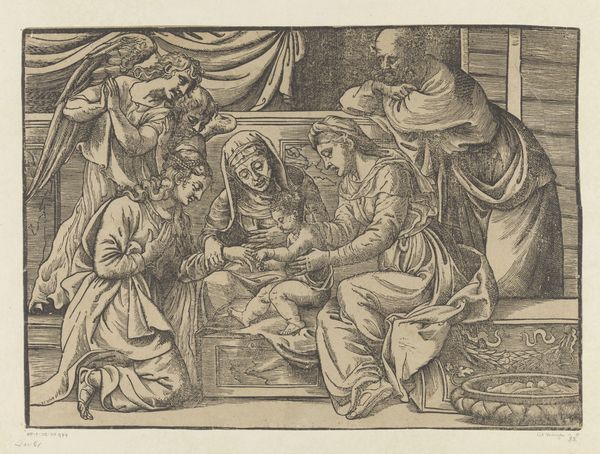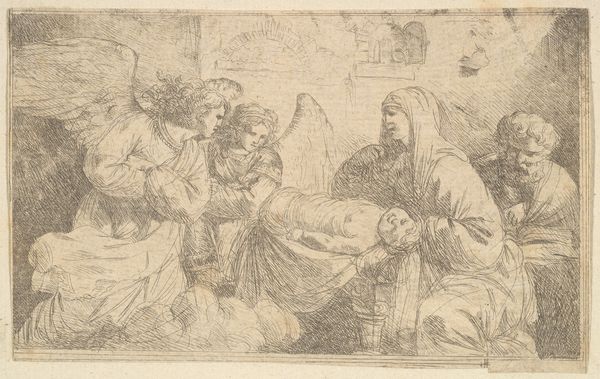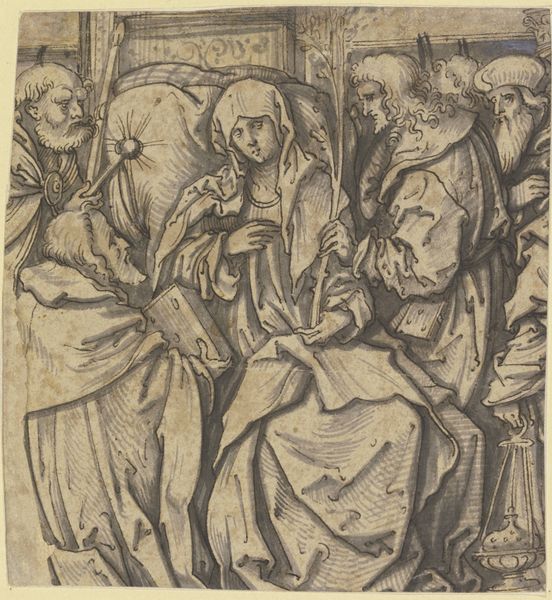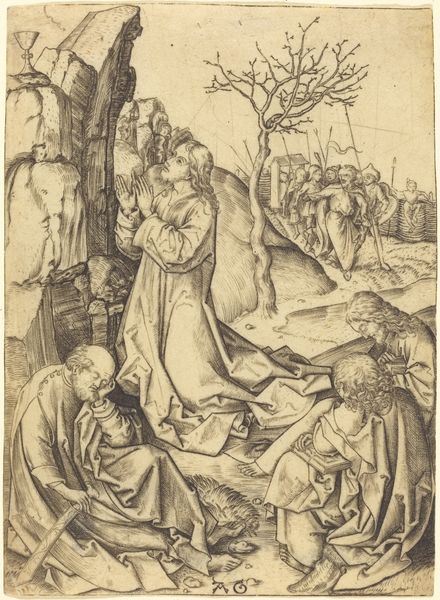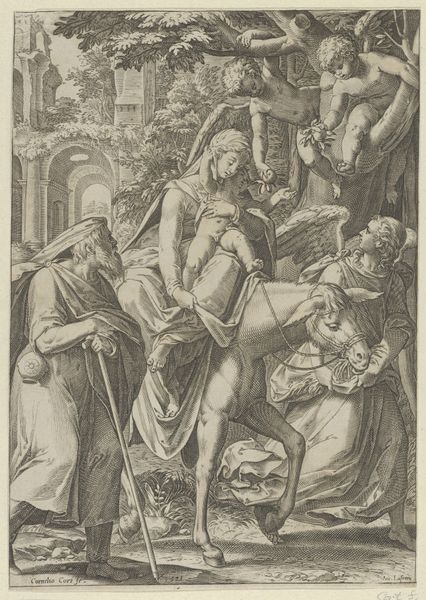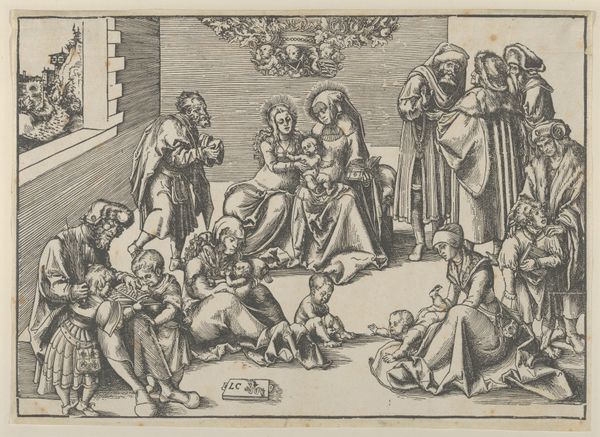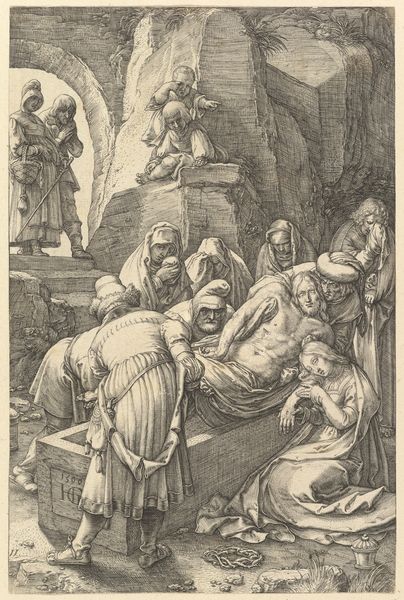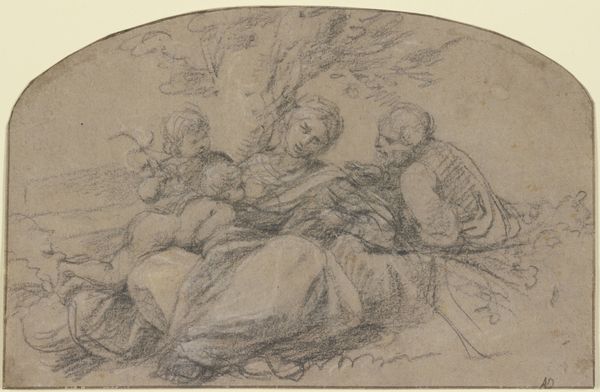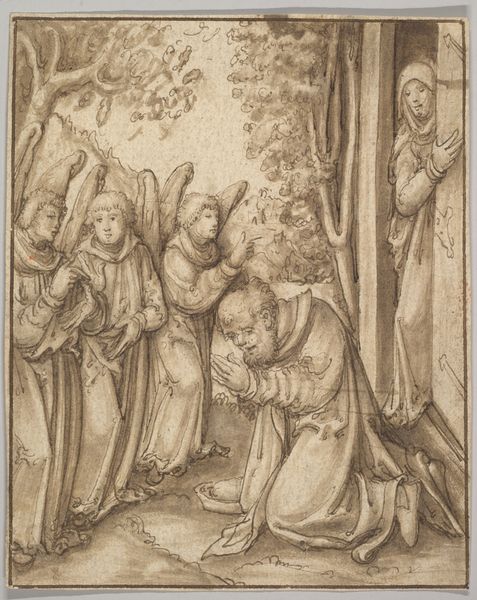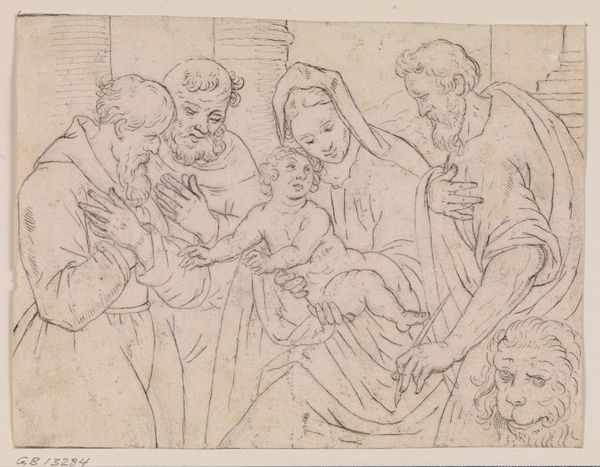
drawing, pencil
#
drawing
#
medieval
#
charcoal drawing
#
figuration
#
pencil
#
history-painting
Copyright: Public Domain
This drawing depicts the mourning figures and soldiers beneath the cross. The swooning Virgin, surrounded by sympathetic women, is the central motif, a poignant symbol of maternal grief. This specific iconography, known as the "Descent from the Cross," echoes across time. The Virgin's collapse is reminiscent of ancient depictions of mourning goddesses, figures of profound sorrow. The motif transcends cultures, reappearing in Renaissance paintings and even modern photography, each iteration imbued with the weight of human suffering. Consider the gesture of the supporting women: their embrace, a universal symbol of comfort. We see it mirrored in countless images of loss, from antiquity to contemporary photojournalism. This act of solace taps into a collective memory, a shared understanding of empathy. It triggers subconscious emotions that connect viewers across centuries, reminding us of the cyclical nature of grief and compassion. The image resonates with the enduring human need for connection in the face of death.
Comments
stadelmuseum about 2 years ago
⋮
The "Master of the Worcester Carrying of the Cross" is named for the only painting which can be ascribed to him with certainty: a 'Christ Carrying the Cross' from the Worcester Collection (today Chicago, Art Institute). We know very little about the artist, who seems to have worked around 1420/30 in the South German region, possibly in Regensburg. What we do know is that he was a highly innovative artist whose influence can be seen in quite a number of works from that region and period.Of a small group of drawings attributed to him, most are thought to have originated from his workshop, and only two are believed to be by the Master himself. This sheet owned by the Städel Museum is one of them and shows in a particularly touching way the artist's characteristic style and exceptional creative power. It portrays two groups of people created as part of a larger composition depicting 'Mount Calvary'. On the left, two of the holy women and St John the Apostle are attending to the swooning Virgin Mary; on the right, three soldiers or henchmen are mocking and scorning the figure of Christ on the Cross in what we must regard as a continuation of the composition. To develop the figures, originally drawn with a pen, the artist applied a wash with a brush in shades of varying darkness. The group of mourners is more delicately and simply designed than the three soldiers, who are not only draped and equipped with fashionable accessories, but also look more differentiated and more corporeal. Their coarse expressions are in keeping with their excited postures, which culminate in the figure at the front who has tilted his head backwards and is sticking out his tongue. With minimal artistic means the artist succeeds in contrasting grief and suffering with brutality and evil and thus reflects the event of the Passion in human emotions. The art of the Master of the Worcester Carrying of the Cross is rooted in the stylised form of the International Gothic style, but is imbued with a new attention to reality.
Join the conversation
Join millions of artists and users on Artera today and experience the ultimate creative platform.
